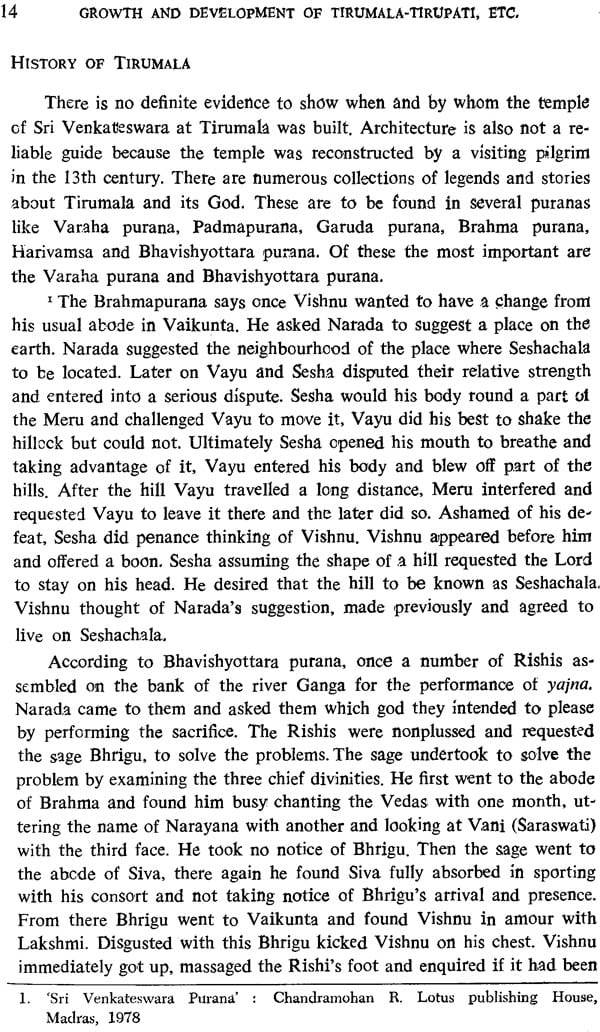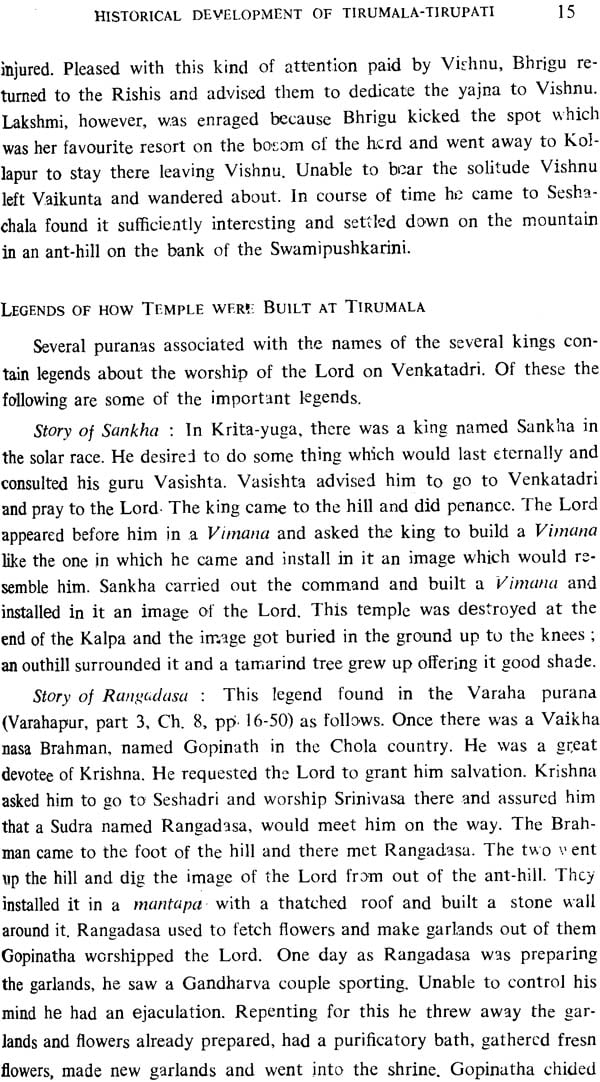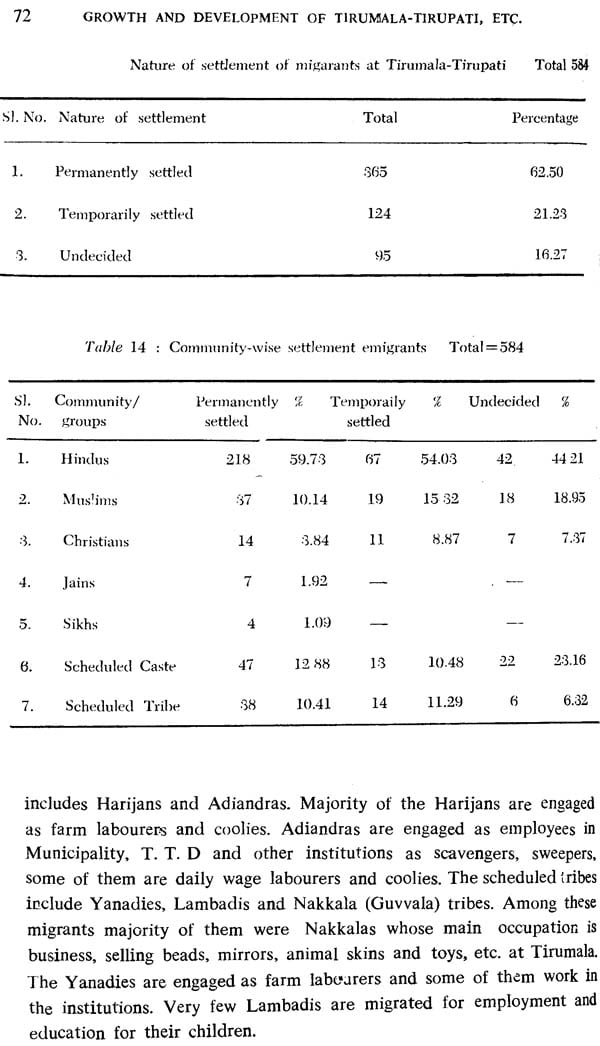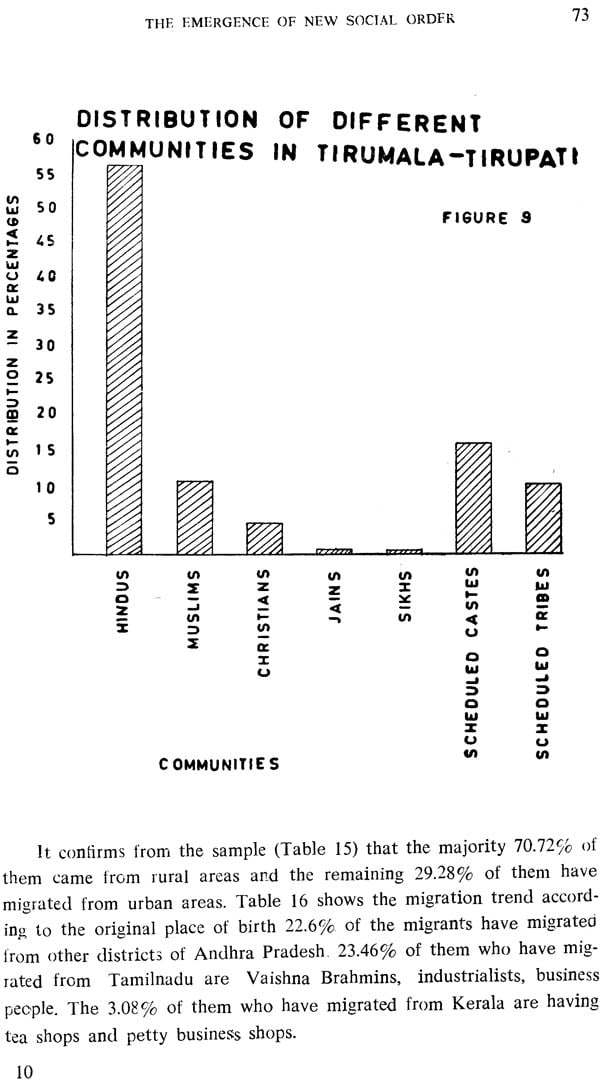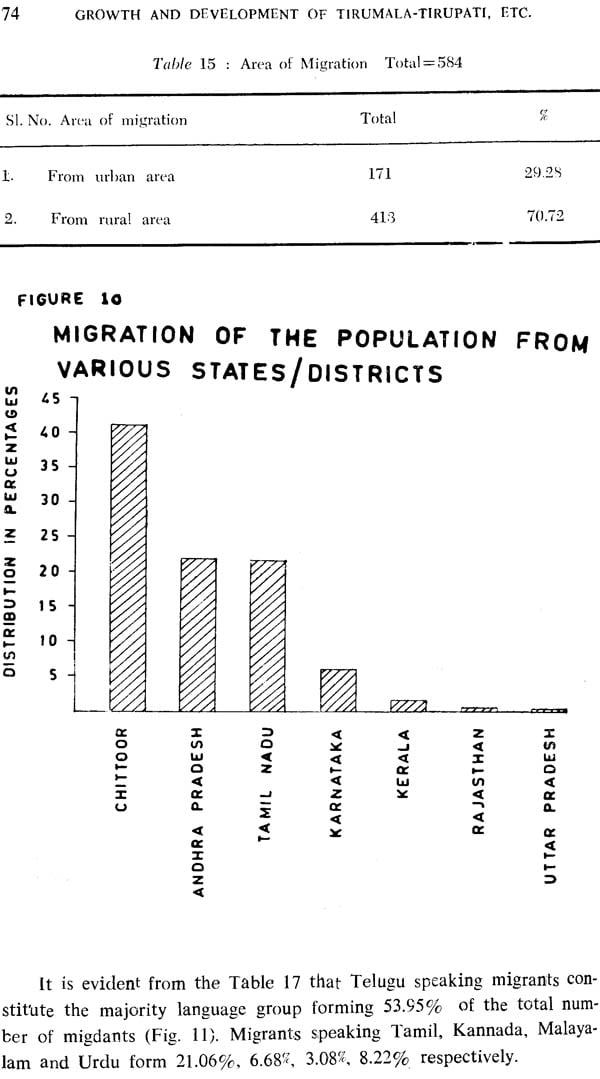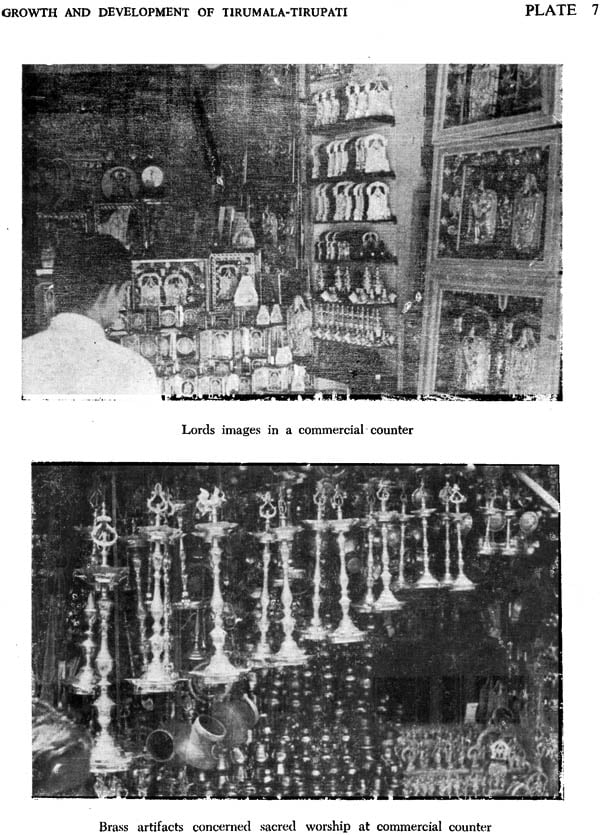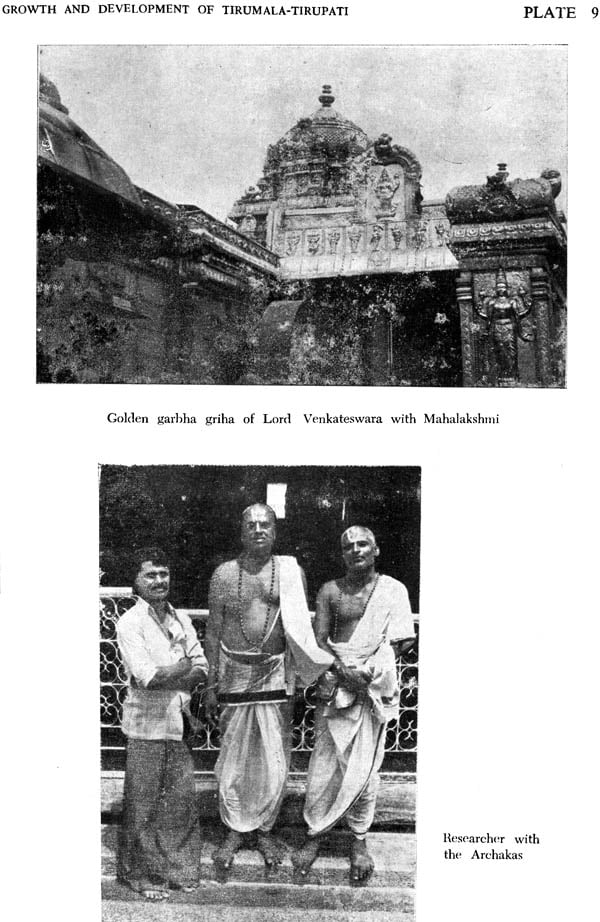
Growth and Development Tirumala-Tirupati as a Dimension of Indian Civilization
Book Specification
| Item Code: | NAH280 |
| Author: | Thalapaneni Subramanyam Naidu |
| Publisher: | Anthropological Survey of India, Kolktata |
| Language: | English |
| Edition: | 1990 |
| Pages: | 214 (19 BW Illustrations) |
| Cover: | Hardcover |
| Other Details | 10 inch X 6.5 inch |
| Weight | 550 gm |
Book Description
Introduction
Although there were some historical descriptions of the Hindu places of pilgrimages by Indologists, orientalists and travellers before the middle of this century, it was not until the early fifties that the cultural analysis of these places began to appear. Gaya was perhaps the first to attract the attention of an anthropologist (L. P. Vidyarthi 1953-54). Bhuvaneswara another sacred centre of ancient origin, was also taken up (Bose 1955-56) as the anthropological study of holy places in India. Both these studies were inspired in many ways by the late prof. Robert Redfield. The writings of Robert Redfield (1955,’56,’57), Milton Singer (1955,’58), Mckim Marriott (1955,’59,’60,’61) which gave further theoretical and methodological leads in understanding the study of folk and peasant communities in India as dimensions of Indian civilization. Redfield’s concepts of ‘Great’ and ‘Little’ traditions provided a new perspective in understanding Indian civilization, In other words, it led to the beginning of an anthropological approach to the study of civilization by studying great and little communities of various dimensions. In this connection, it would not be out of place here to make a brief reference to some of the contributions of Redfield, relevant to the present study.
In studying civilization Redfield (1955,56,67) developed his propositions ‘Great’ and ‘Little’ traditions. According to him the intellectual in- fluences that come from outside the villa e may be termed as ‘Great tradition’, and those come from the local areas are termed the ‘Little tradition’. He also introduced the term cultural specialist for such organised groups of people who mediate between the great and little traditions. Singer further introduced concept of ‘cultural media’ such as song, dance, recitation, etc., through which cultural specialists communicate to the masses and thus establish continuity between the two traditions.
After formulating these terms and concepts, Redfield put forward his explicit definitions of civilization in various ways. First, he defines civilization as “a complex structure of great and little traditions” (1955). This definition in terms of traditions emphasizes cultural content together with its historical sources and levels of development. Second, with the emphasis 011 the social structure of traditions, but in terms of the same concepts used above, he defines civilization “as an organisation of specialists, kinds of role occupiers in characteristics relations to one another and to lay people and performing characteristic functions concerned with the transmission of tradition” (op. cit 1955). Third, along with Singer he proposes another definition of civilization in terms of self axis, that is, in view of a characteristic world view, ethos, temperament, value system, cultural personality, etc. (1955a : 79). This definition shows the psychological characterisation and interpretation of understanding a civilization. In this way, Redfield’s theoretical and methodological study of civilization provided new trend.
Milton Singer (1955) applied to his study of Indian civilization, some of the views of Redfield as stated above. He examined Redfield’s concept of ‘cultural specialist’ in Indian situation and formulated some other concepts such as ‘cultural media’, ‘cultural performances’, ‘cultural stages’, etc. He further suggested that concepts like ‘great’ and ‘little traditions’ or ‘social organisation of traditions’ can be formulated on more abstract levels. He also formulated several broad hypotheses concerning the relation of great and little traditions in Indian civilization which may be summarised in the following sentences.
Contents
| Chapter I |
|
| Introduction | 1 |
| Chapter II |
|
| Historical Development of Tirumala-Tirupati | 12 |
| Chapter III |
|
| Physical Features | 31 |
| Chapter IV |
|
| Demographic Characteristics of the Population | 49 |
| Chapter V |
|
| The Old Social Order | 61 |
| Chapter VI |
|
| The Emergence of new Social Order | 69 |
| Chapter VII |
|
| Religious Development | 83 |
| Chapter VIII |
|
| Morphology And Land Use Zone Of Tirupati | 145 |
| Chapter IX |
|
| Summary and Conclusion | 164 |
| Bibliography | 169 |
| Appendix | 181 |
| Glossary | 182 |
| Photographs |
|


